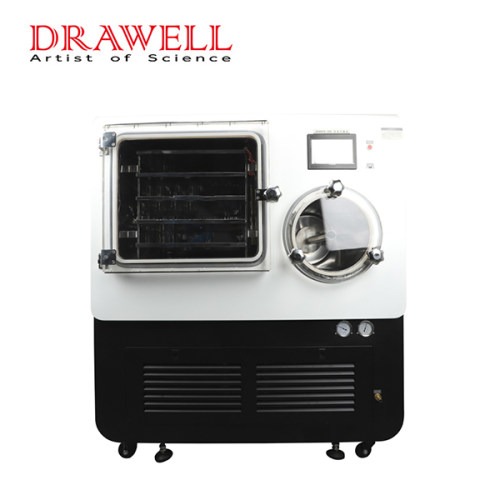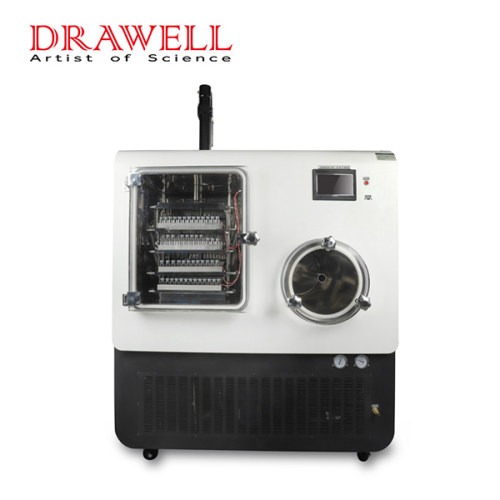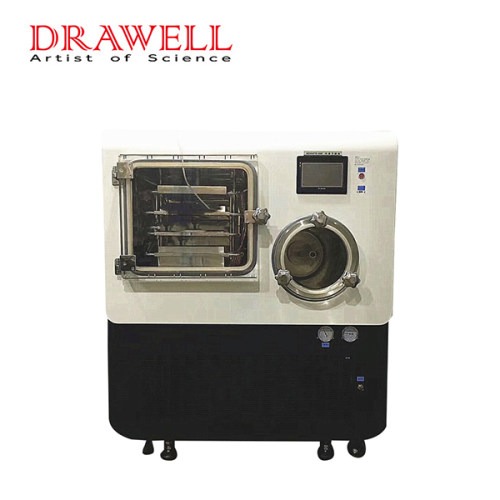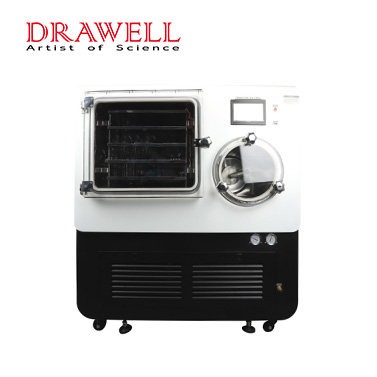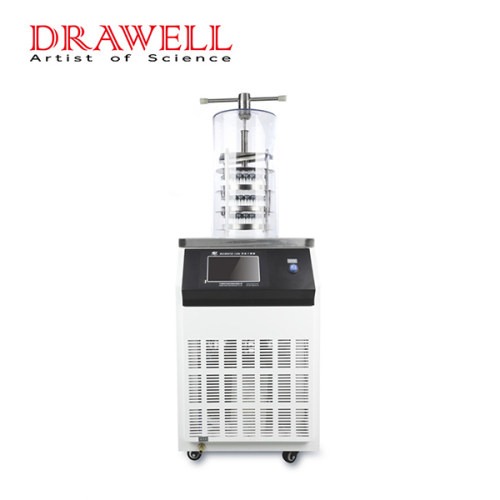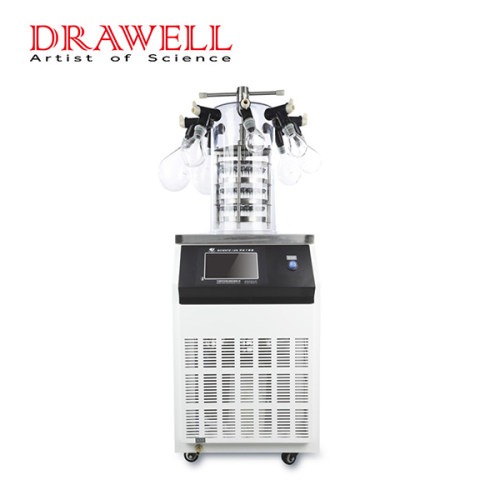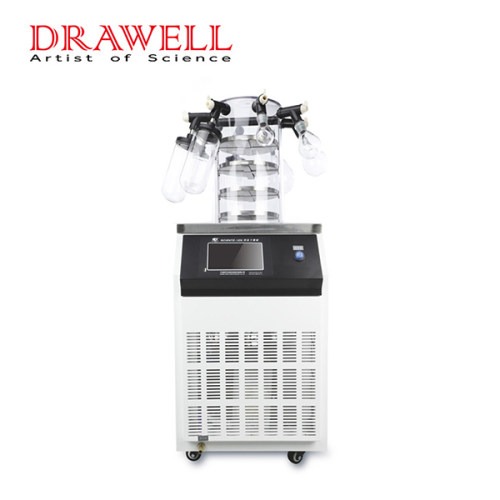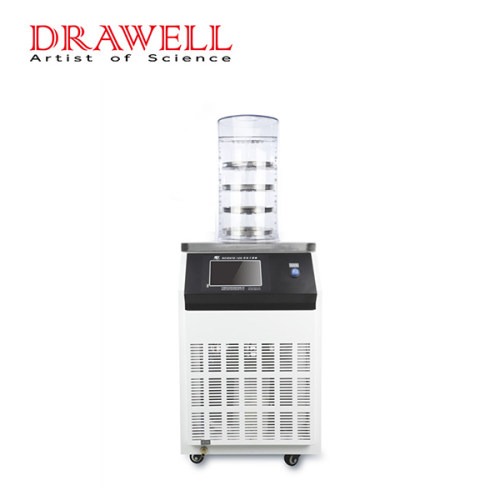Both spray dryers and freeze dryers are instruments used to dry substances, but they have obvious differences in the scope of application and equipment. This article will explain to you what their differences are and what their advantages are.
What Is the Spray Dryer?
Spray drying is a method of systematic technology applied to material drying. After the thinner is atomized in the drying room, the water vaporizes quickly in contact with the hot air, and the dry product is obtained. This method can directly dry the solution and emulsion into powder or granular products, which can save the evaporation, crushing, and other processes.
The principle is to disperse the material to be dried into very fine mist-like particles through mechanical action, (increase the evaporation area of water and accelerate the drying process) contact with hot air, remove most of the water in an instant, and make the material The solid matter in dry to a powder.
The spray dryer is at an instant high temperature, the moisture is quickly vaporized, and the drying effect is good! At the same time, the spray-dried particles are relatively uniform and have good fluidity.
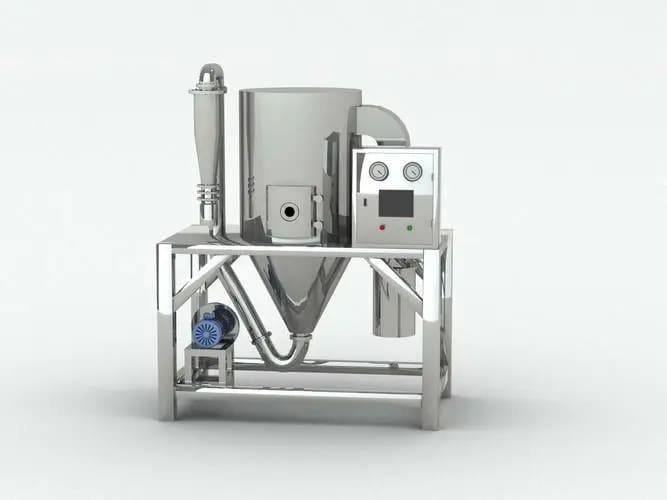
Spray Drying of Food
For some plants, the nutrients will be lost due to high temperatures. For these plants, freeze-drying is an effective concentrated preservation method. However, some plants do need high temperatures to remove toxicity. For these plants, spray-drying technology is It couldn’t be more ideal. In the case of soybeans, the concentration process requires high temperatures to remove substances called trypsin inhibitors (which hinder digestion and break down proteins).
The spray dryer is often the last step in the manufacturing process, which is to change the substance from liquid to powder through continuous spraying, mixing, and drying. Among the many techniques for storing food, spray drying has its unique characteristics. Because the temperature used in this technology is not very high, it can effectively retain the taste, color, and nutrition of food while removing microbial contamination.
Spray drying is usually used to remove moisture from raw materials. In addition, it has many other uses, such as: changing the size, shape, or density of substances, it can assist in the addition of other ingredients in the production process, and it can help produce products with strict quality standards.
The fruit and vegetable powder produced by spray drying can retain the nutrients of fresh fruits and vegetables, and the volume is reduced by 70%, which is convenient for consumption and transportation.
This is a comparison table of nutrients in spray-dried pumpkin powder, taking fresh pumpkin as an example:
Drying technology can be divided into high-temperature and low-temperature drying. Spray drying uses high-temperature spraying, but some samples in the experiment will be oxidized when encountering high temperatures, so we can use freeze-drying!
What Are the Advantages of the Freeze Dryer?
Freeze drying is also called sublimation drying. The drying method is to freeze the water-containing material below the freezing point, turn the water into ice, and then turn the ice into vapor under a relatively high vacuum to remove it. The material can be frozen in the freezer first and then dried. But it can also be frozen directly in the drying room by quickly evacuating it. The water vapor produced by sublimation is removed by the condenser. The heat of vaporization required in the sublimation process is generally supplied by thermal radiation.
The principle is that it is known from physics that water has three phases, point O is the common point of the three phases, and OA is the melting point of ice. According to the principle of pressure reduction and boiling point reduction, as long as the pressure is below the triple point pressure (pressure below 646.5Pa, temperature below 0°C), the moisture in the material can be directly sublimated from water to water vapor without passing through the liquid phase.
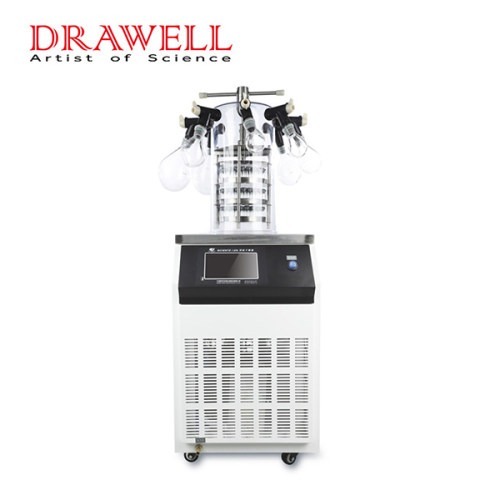
According to this principle, we can first freeze the wet raw materials of food to below the freezing point, so that the moisture in the raw materials becomes solid ice, and then in a proper vacuum environment, the ice is directly converted into steam and removed, and then the vacuum system The water vapor condenser in the machine condenses the water vapor so that the material is dried.
This method of obtaining drying by vacuum freezing is a process of water state change and movement, which occurs at low temperatures and low pressure. Therefore, the basic principle of freeze drying is the mechanism of heat and mass transfer at low temperatures and low pressure.
Freeze Dryer Has the Following Advantages:
- The freeze dryer operates at low temperatures, so it is suitable for many heat-sensitive substances. Such as proteins, microorganisms, and the like will not denature or lose biological activity. Therefore, it is widely used in medicine.
- When drying at low temperatures, the loss of some volatile components in the substance is very small, which is suitable for drying some chemical products, medicines, and food.
- During the freeze-drying process, the growth of microorganisms and the action of enzymes cannot be carried out, so the original properties can be maintained.
- Since it is dried in a frozen state, the volume is almost unchanged, the original structure is maintained, and no condensation occurs.
- After drying, the substance is loose and porous, in the shape of a sponge. It dissolves quickly and recovers to its original shape almost immediately after adding water.
- Because drying is carried out under a vacuum, there is very little oxygen, so some easily oxidized substances are protected.
- Drying can remove more than 95-99% of water so that the dried product can be stored for a long time without deterioration.
Spray dryers and freeze dryers have their advantages and disadvantages. The characteristic of spray drying is that the water vaporizes quickly and the drying effect is good! At the same time, the spray drying speed is fast, the particles are relatively uniform, and it has good fluidity. However, the high-temperature spray will destroy the tissue structure of the product. Freeze-drying is characterized by low-temperature freeze-drying, less sample processing, and a long time!

